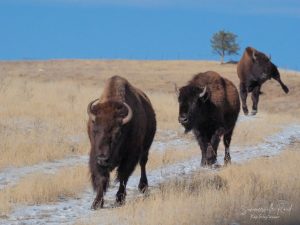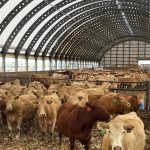R-CALF USA: Time to Reengineer U.S. Beef Tariff Rate Quotas
The United States imported a record quantity of beef in 2024, and when imported live cattle are converted to a beef equivalent, the year’s total imports represented approximately 22 percent of all beef consumed in America.
The United States maintains tariff rate quotas (TRQs) for global beef imports to restrain the quantity of imports entering the domestic market and competing against beef produced from cattle born and raised by U.S. cattle farmers and ranchers.
Country-specific TRQs were established for major suppliers of beef imports, including Australia, New Zealand, Argentina and Uruguay, while two of the major suppliers–Canada and Mexico–were expressly exempted from TRQ restraints pursuant to the North American Free Trade Agreement (NAFTA) and remain so today. The rest of the world’s suppliers of imports were collectively assigned a TRQ restraint designated for “Other countries or areas.”
The “Other countries or areas” TRQ has captured attention in recent years because it has been dominated by a single country–Brazil. However, several other beef suppliers that would normally be included in this category are exempt due to free trade agreements. The beef-exporting countries of Nicaragua, Costa Rica and the Dominican Republic are examples of countries no longer subject to a U.S. restraint.
Also, the TRQ restraints do not apply to the full array of beef products supplied by foreign countries and are primarily limited to unprocessed fresh/chilled or frozen boneless and bone-in cuts, high-quality beef cuts, and carcasses and half carcasses. Variety meat (also referred to as edible offal) and processed products are not included, nor are live cattle imports.
Because TRQ limits apply only to a subset of beef imports and do not apply to several global suppliers, only 42% of the total quantity of beef imported in 2024 was restrained by the beef TRQ. But this is not a holistic depiction of the actual quantity of beef comprising the U.S. beef supply because it does not include the beef equivalent of the millions of head of live cattle imported each year and subsequently converted to beef in U.S. slaughtering plants. When the beef equivalent of imported cattle is properly included, only 29% of the grand total quantity of beef from foreign-born cattle that entered the U.S. beef supply in 2024 was restrained by the current U.S. beef TRQ.
Thus, while attention has focused on the U.S. beef TRQ system because Brazil has recently dominated the “Other countries or areas” TRQ category, the real concern should be whether the current U.S. beef TRQ system is even remotely capable of sustaining a viable, self-sufficient domestic beef supply chain–a quintessential national security objective.
The answer to that question is a resounding no. The current U.S. beef TRQ system that exempts numerous beef exporting countries and applies to only a small fraction of the total quantity of beef derived from foreign-born cattle within the U.S. beef supply is woefully inadequate for protecting the integrity and viability of the U.S. cattle and beef supply chains.
The current TRQ system fosters an ever-increasing supply of foreign beef and cattle that are direct product substitutes for beef and cattle produced domestically. This has discouraged growth in domestic beef and cattle production, preventing domestic production from keeping pace with increased domestic consumption; reduced the United States’ self-reliance in cattle and beef production, increasing the United States’ dependency on foreign cattle and beef; contracted the U.S. cattle industry in terms of its number of beef cattle farms and ranchers and beef cow inventory, hollowing out rural communities and weakening the rural economy; and sustained a persistent U.S. trade deficit in the trade of cattle and beef, weakening the U.S. economy and threatening national security.
To meet national security, an entirely new and more inclusive U.S. beef TRQ system should be implemented that effectively manages the influx of both cattle and beef imports at levels that empower the U.S. cattle and beef industries to achieve self-reliance in beef production from domestic cattle. A new TRQ system must provide sufficient “space” for the domestic cattle industry to earnestly expand its domestic cow inventory.
To prevent market disruptions, a new TRQ system should be phased in over a period of several years with the goal of encouraging the domestic cattle industry to recapture the current 22% share of domestic beef consumption that is currently captured by beef from foreign-born cattle.
As a starting point, we recently asked the U.S. Secretary of Commerce to establish a TRQ that would reduce the quantity of imports entering the U.S. market by 1.5 billion pounds, which would be a 24% reduction from the 2024 import quantity.
Now is the time to rebuild our U.S. cattle industry, and a new TRQ system can help us do it
–Commentary by Bill Bullard, CEO, R-CALF USA




